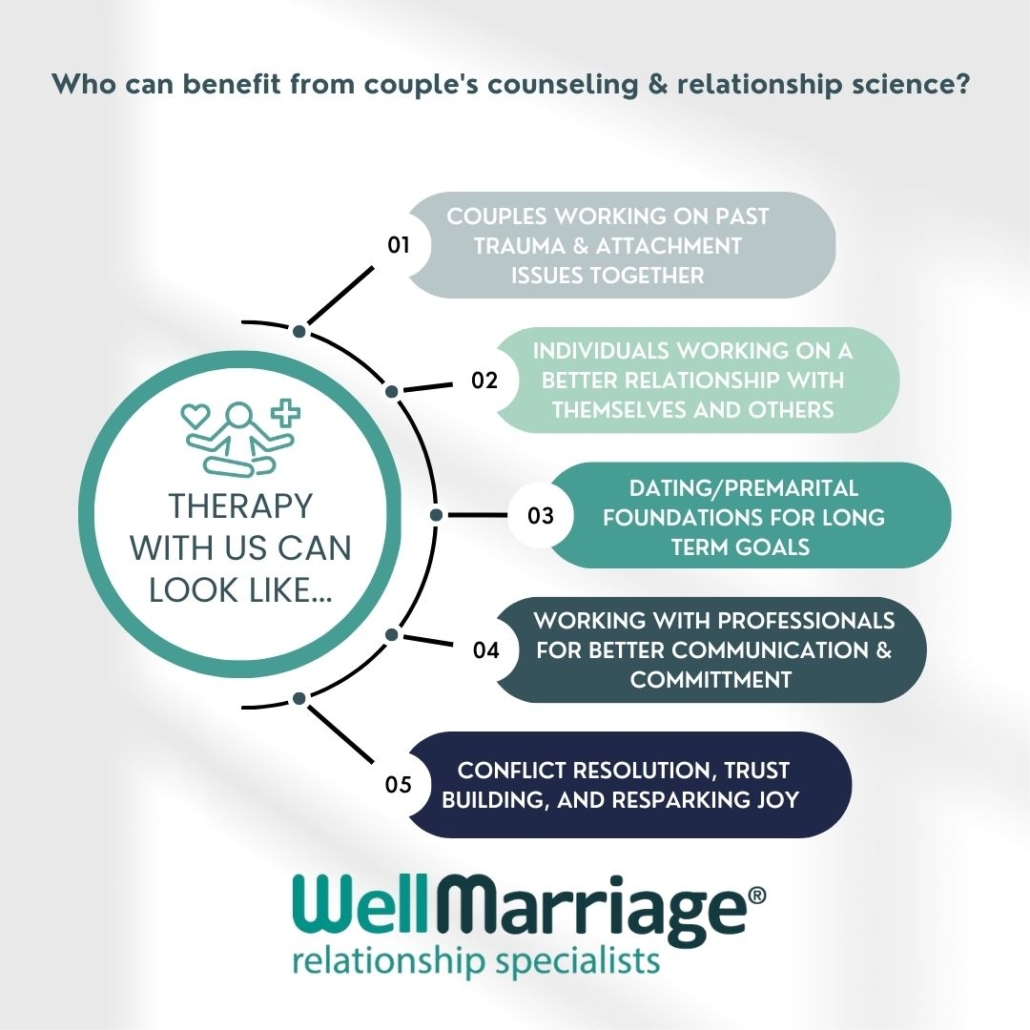Indicators on Aim Point Counseling You Should Know
Indicators on Aim Point Counseling You Should Know
Blog Article
Excitement About Aim Point Counseling
Table of ContentsThe Ultimate Guide To Aim Point CounselingMore About Aim Point Counseling4 Easy Facts About Aim Point Counseling Described5 Easy Facts About Aim Point Counseling ShownThe Aim Point Counseling DiariesFascination About Aim Point Counseling
The longitudinal layout involves a pre-treatment survey and two follow-up surveys at 3- and 12-months post-intervention. The research study is embeded in 8 Relationships Australia Victoria centres, throughout city, outer suburban areas, and regional/rural websites. Relationships Australia, a non-government organisation, is the biggest copyright of couple therapy and connection solutions in Australia.In Australia, the typical length of marriage prior to splitting up is 8.8 years, and approximately half of all separations involve couples with children [1] These high rates of relationship failure have actually been regularly connected with unfavorable health and wellness repercussions for both grownups and youngsters complying with divorce/separation. These include isolation from support networks, and decreased income and standard of living for both adults and kids [3], issues of loyalty over children for males, and anxiety and loss of identity for females [4,5]
About Aim Point Counseling
Longitudinal research studies likewise suggest that youngsters of divorce have a higher incidence of psychological conditions, alcohol and drug usage, and risky sexual practices [7] The impacts of divorce and separation can be detrimental, research indicates that high partnership disharmony in intact couples is also likely to have adverse results.
Research to date has recognized both pair and individual elements that may contribute to connection discord. These consist of connection satisfaction and dedication at the couple degree, and anxiety at the individual level.
The Ultimate Guide To Aim Point Counseling
For that reason, while many research studies suggest enhancements in connection complete satisfaction adhering to couple coaching, they are limited by the samples and steps made use of, mostly temporary follow-up timespan, and evaluations that do not account for the dyadic nature of pair information. Partnership commitment, based on steps such as the Commitment Supply (CI) [19], is another typically investigated partnership result.
To summarise, research study indicates that couple-specific variables as well as private variables might forecast the results of pair counselling and connection services. The causal direction of these connections, however, is much less clear. These observations are very important, since, to justify and guide the application of relationship services such as pair counselling, empirical evidence must explore both the outcomes of connection services and the variables that predict successful therapy.
Consequently, there is an expanding agreement that efficacy research studies need to be matched by efficiency study to best educate scientific method [ 29] The restricted efficiency study that exists to day recommends that pair counselling can enhance results such as connection fulfillment [33,43], communication abilities and basic wellness [44], at least in some European countries.

We currently know little about the profiles of pairs that look for connection education compared with those that look for connection counselling, or the results of these programs. Nonetheless, anecdotal evidence suggests that there might be considerable distress among a minimum of some couples looking for relationship education and learning. Relationship education programs vary from couple coaching as they are normally very structured, performed in teams, and concentrate on a mixture of four elements; understanding, feedback, cognitive adjustment, and abilities training [45]
The Buzz on Aim Point Counseling
Feedback involves participants finishing surveys about their relationship (e.g. measures of interpersonal problems), and obtaining info on what their ratings show. Cognitive-behavioural strategies advertise transforming cognitions to help with positive connections.
These meta-analyses highlight constraints in the existing literary works on partnership education and learning. This sample account may not stand for clients that generally provide for partnership education.
Aim Point Counseling Can Be Fun For Everyone

Very little research has actually analyzed the relative benefits of pair counselling and partnership education programs. As customers are likely to self-select right into these solution types, it is not clear whether particular relationship distress accounts existing to every solution kind, or without a doubt whether there is a communication in between providing account, service kind and outcome.
(https://www.huntingnet.com/forum/members/a1mpoint.html?simple=1#aboutme)
Hence, we have actually included a 12-month follow-up to evaluate longer-term trends and impacts.
We propose to use multi-level analytical modelling procedures that control for the inter-dependence of couple data to examine any type of therapy impacts. The certain purposes of the ECC study are to: 1. Map accounts of clients seeking area agency-based couple counselling vs. partnership improvement programs in regards to socio-demographic more helpful hints and relationship signs (such as connection complete satisfaction, relationship dedication, social troubles, and reasons for attending), in addition to wellness (such as depression, basic wellness) and wellness solution use (eg.
2. Figure out whether pair counselling and partnership education services improve 3- and twelve-month outcomes for relationship contentment, commitment, and clinical depression, using analytical analyses suitable to couple information. 3. Figure out the relative contributions of customer aspects (specific and couple) and therapy/education aspects to outcomes at 3- and 12-months, and to sustainability of results over time.
All About Aim Point Counseling
Multi-level modelling to determine pre-post differences, managing for dyadic (couple) degree. To add to the literary works analyzing the effectiveness of community-based couple counselling. The results will certainly aid scientific decision-making in community-based partnership solution settings, and specialist training. 3. To identify the loved one contributions of client/couple and therapy variables to outcomes at 3- and 12-months, and to sustainability of end results in time.
Report this page